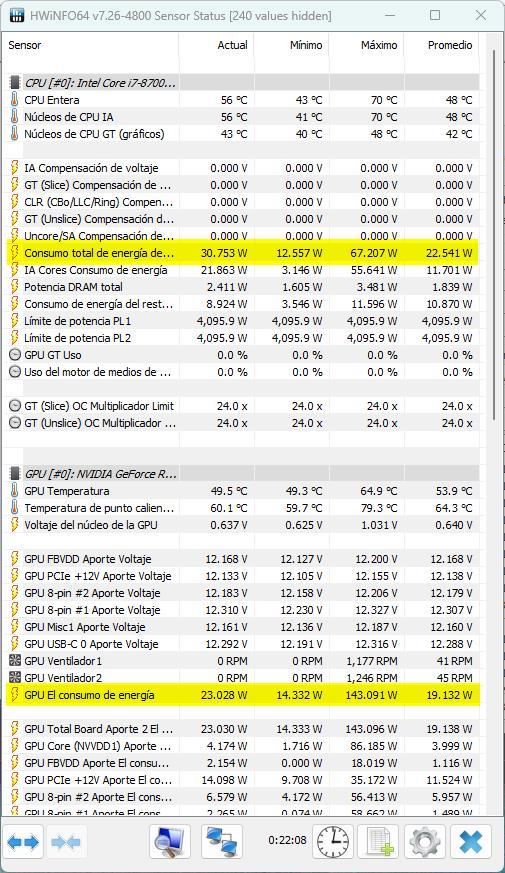The light is through the clouds. And, unfortunately, things don’t seem to be getting any better. For this reason, many of us are constantly thinking about how to save a little more and reduce the consumption of unnecessary systems and appliances. Many of us think that the computer is one of the systems that consumes the most, spends the most electricity and triggers our bill at the end of the month for having it on all day. But is it really true?
It is true that, if we telecommute, we have no choice but to assume the expense of having the computer on with the programs that we are going to use. But if we use the computer for leisure, seeing the constant uploads, we almost certainly think that it is better to leave it off and use other devices that consume less, such as a tablet or a laptop.
Computers consume more or less depending on the use we are making of them. Although we have a 1000 W power supply, this is not the constant consumption that the computer will have (and luckily). It will depend on the components that form it and the load, in real time, that these have. Using Word, or browsing with Chrome, is not the same as playing or editing videos with Premiere.
As it is most likely that we do not know what components the PC has, we will not know what each one consumes either. But, considering that the processor and the graphics card are what consume the most, it is very easy to calculate it ourselves.
Calculate the average consumption of our PC
To do this, we are going to use a program called “HWiNFO”. This software allows us to know in detail the hardware of the computer and access the information of the many sensors that all the pieces have inside.
Once this program is downloaded, what we will do is run it, and enter the sensors section. It will load all the information about them, and we will be able to see a large amount of information that, right now, will not interest us. What interests us is to know the consumption in real time of the two components that we have mentioned. To do this, we will locate the two energy consumption entries, one in the processor section, or CPU, and another in the graphics card section, or GPU.

We can see several columns: current, minimum, maximum and average. We are going to focus, specifically, on these last two. Now we will simply leave the program open for one hour (since electricity is billed based on the thousands of watts consumed each hour) and, when we have 60 minutes (we can see a clock at the bottom), we write down the two values.
If we stay with the average consumption, we will be able to know exactly how much the computer has consumed. On the contrary, with the maximum, we will know how much consumption would have been if it had always been at 100%. But it’s never 100%, so you’ll always spend less than that. To be more precise in this sense, we can try to open a very heavy game (Cyberpunk 2077) and play for a while while the program is measuring consumption in real time. With the maximum values of CPU and GPU consumption we could know how much it would spend each hour at full capacity.
And how much does it cost me?
At this point, we add the average consumption of the CPU and the GPU, and divide it by 1000 to know the kW that the PC has spent. Surely the value will be less than 1. In our concrete example, it would be:
22.5 W de la CPU + 19.1 W de la GPU = 41.6 W / 1000 W = 0.0416 kW
*If the computer has been on for 2 hours, consumption will have doubled. And if it has only been half an hour, half.
My computer has spent, in one hour, surfing the Internet, 0.0416 kW. Now we multiply this by the price of electricity (remember, the price of kW/h plus the top price of gas, in case we do not have it on our bill) to find out how much money this hour surfing the Internet has cost us. For example:
0.0416 kW * (0.14€ kW/h luz + 0.15€ kW/h tope gas) = 0.012 €.
In other words, in one hour browsing the Internet, the PC will have spent just over 1 cent. Obviously, then you have to add other taxes and costs of the invoice. We will also have to add the consumption of the monitor, which we will know by its transformer or its specifications. But what is clear is that having the PC at rest, or making normal use of it, does not imply a great expense in the electricity bill.
In the same way, using the maximum consumption data, we will be able to know how much it could cost to have the PC running at full capacity 24 hours a day. But it is not necessary.














